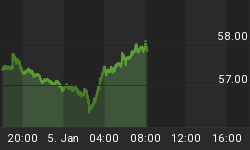The Volatility Index ($VIX) has been making many contrarians nervous during the last few years. The index represents the market's "best guess" of the next 30 days of volatility. With the $VIX at all time lows, the natural perception is that investors are overly optimistic and expect low volatility in the future. It becomes easy to assume that since investors are so complacent, it must be time for a crash. But I do not feel that the $VIX is the end-all sentiment indicator. Low implied volatility does not necessarily have to be bearish.
One only has to look at the early 90's when the $VIX was behaving similarly:

Data Provided by CBOE
Investors became lulled to sleep (or perhaps bored stiff) in the early 90's. No doubt the panic of 1987 was still in the public's perception. While the S&P index doubled during the $VIX "bottoming out" period, it looked like a tough market with range-bound prices and retracements galore.
While looking at mutual fundETF money flows today, I hardly see an overly optimistic market, even with the $VIX breaking down. I see a lot of market timers too skittish to commit to anything long term. I doubt that classic buy and hold investors would come back en masse until we've seen a year or two of solid bull movement again... you know, to "prove itself". It is also important to note that the changes made to the $VIX in 2003 make current readings even lower than what the old methodology produced (albeit slight). And there is clearly a lack of volume today when compared to the "hey days". With all that said, I'm no perma-bull... But we appear to be in the era of short attention spans and instant gratification. And this is the greatest shell game on Earth.















